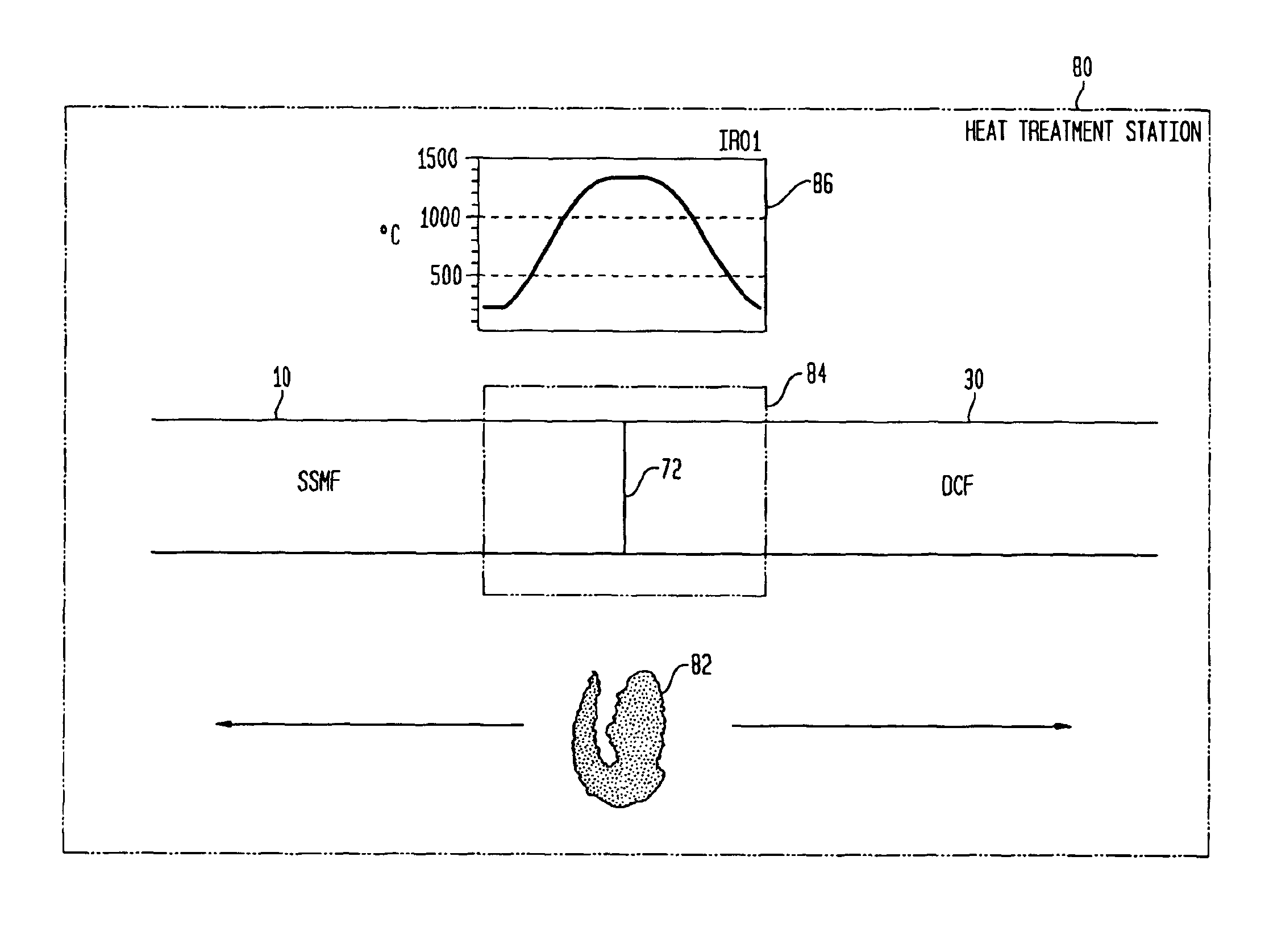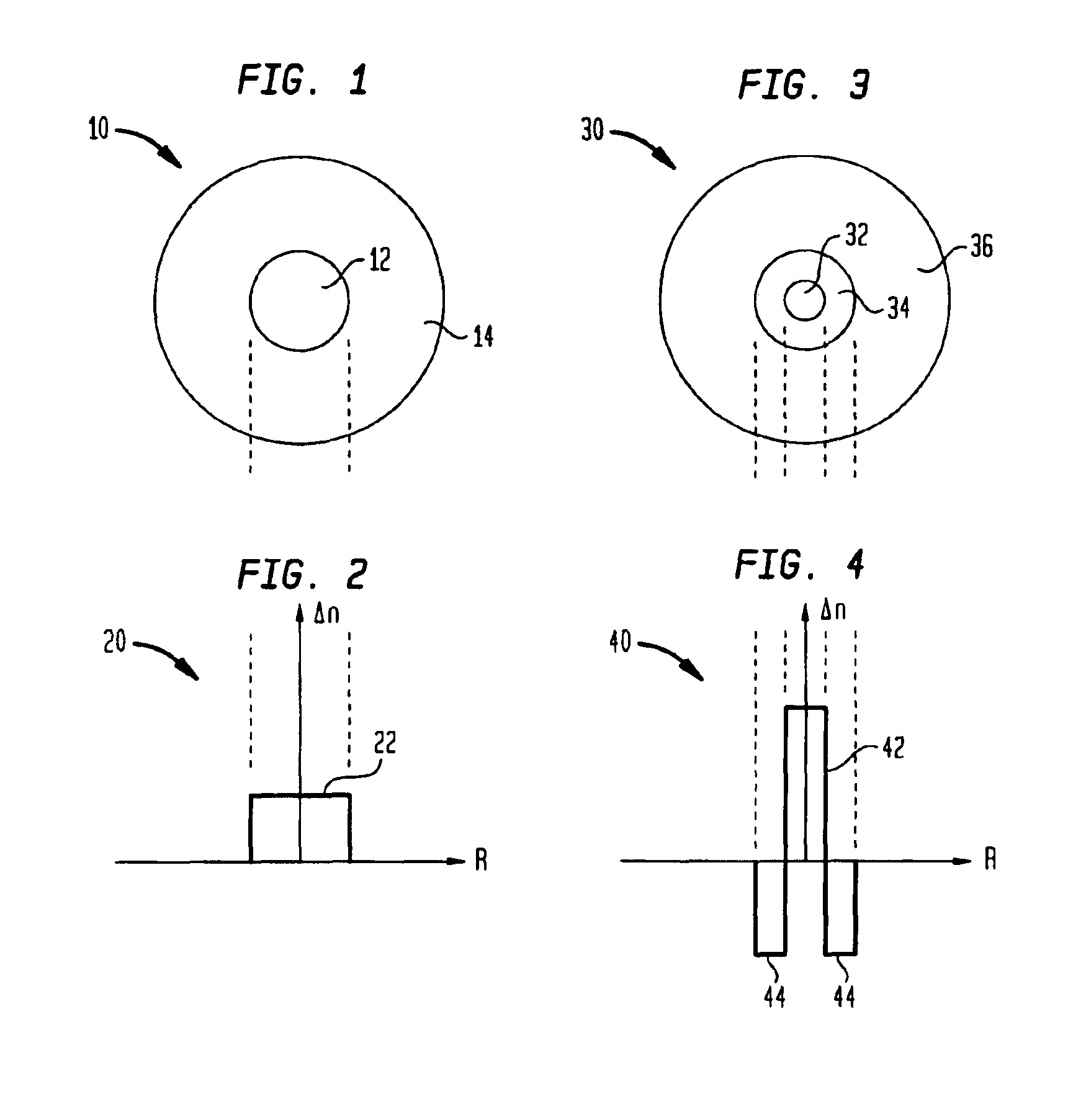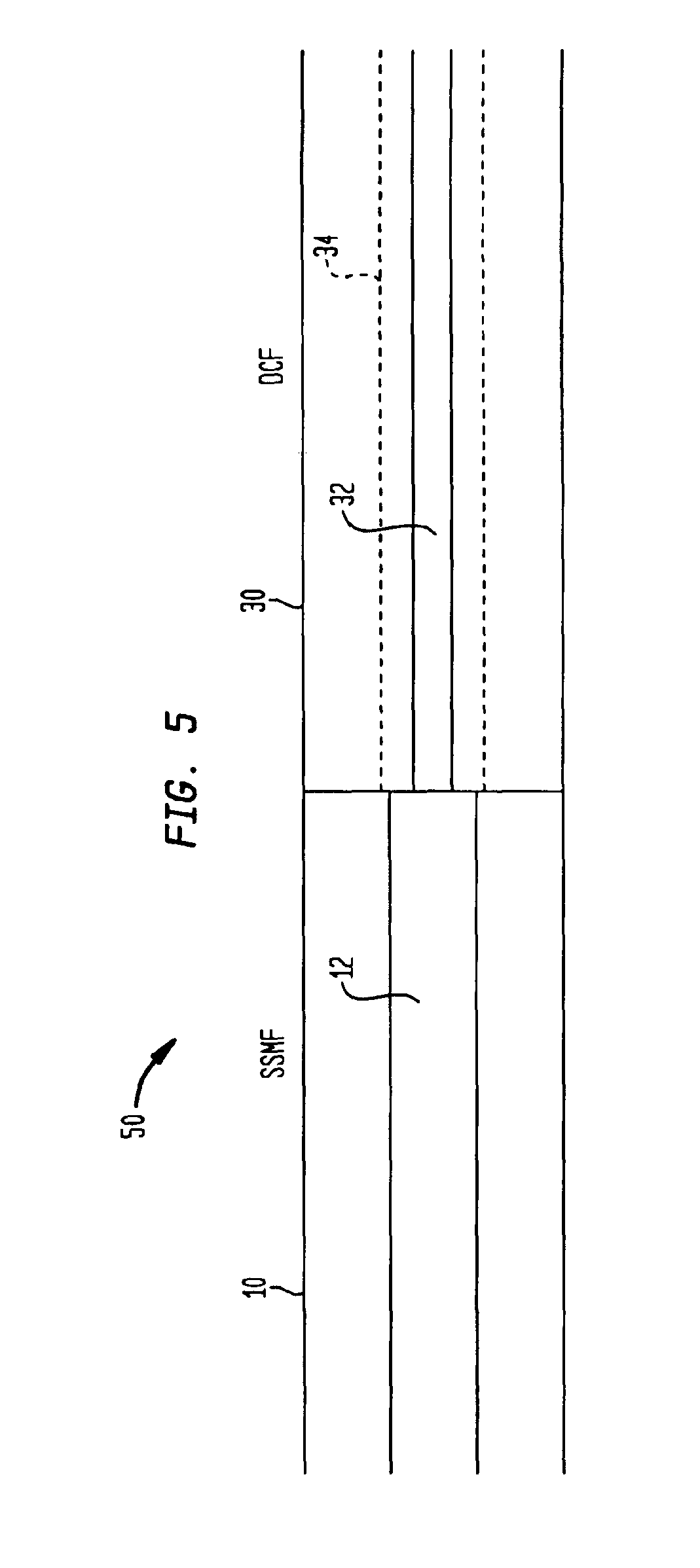Systems and methods for fabricating low-loss, high-strength optical fiber transmission lines
a technology of optical fiber transmission lines and high-strength fibers, applied in the direction of instruments, lighting and heating apparatus, combustion types, etc., can solve the problems of significant signal loss, achieve high-strength, reduce splice loss, and high-strength
- Summary
- Abstract
- Description
- Claims
- Application Information
AI Technical Summary
Benefits of technology
Problems solved by technology
Method used
Image
Examples
Embodiment Construction
[0028]Aspects of the present invention provide systems and techniques for fabricating a low-loss, high-strength optical transmission line from an inverse dispersion fiber (IDF), such as a dispersion-compensating fiber (DCF), and a second type of fiber, such as a standard single mode fiber (SSMF). It will be appreciated that the systems and techniques described herein may be applied to other types of fibers and fiber dopants without departing from the spirit of the invention. Further, the techniques described below may be practiced singly, or in combination with each other.
[0029]FIG. 1 shows a cross section of an exemplary length of SSMF 10. SSMF is typically fabricated from silica (SiO2). The SSMF 10 includes a germanium-doped core 12 and an undoped outer cladding layer 14 surrounding the core 12. FIG. 2 shows the refractive index (RI) profile 20 for the SSMF 10. As shown in FIG. 2, the SSMF RI profile 20 includes a central plateau 22 corresponding to the SSMF core 12.
[0030]FIG. 2 s...
PUM
| Property | Measurement | Unit |
|---|---|---|
| modefield diameter | aaaaa | aaaaa |
| modefield diameter | aaaaa | aaaaa |
| modefield diameter | aaaaa | aaaaa |
Abstract
Description
Claims
Application Information
 Login to View More
Login to View More - R&D
- Intellectual Property
- Life Sciences
- Materials
- Tech Scout
- Unparalleled Data Quality
- Higher Quality Content
- 60% Fewer Hallucinations
Browse by: Latest US Patents, China's latest patents, Technical Efficacy Thesaurus, Application Domain, Technology Topic, Popular Technical Reports.
© 2025 PatSnap. All rights reserved.Legal|Privacy policy|Modern Slavery Act Transparency Statement|Sitemap|About US| Contact US: help@patsnap.com



